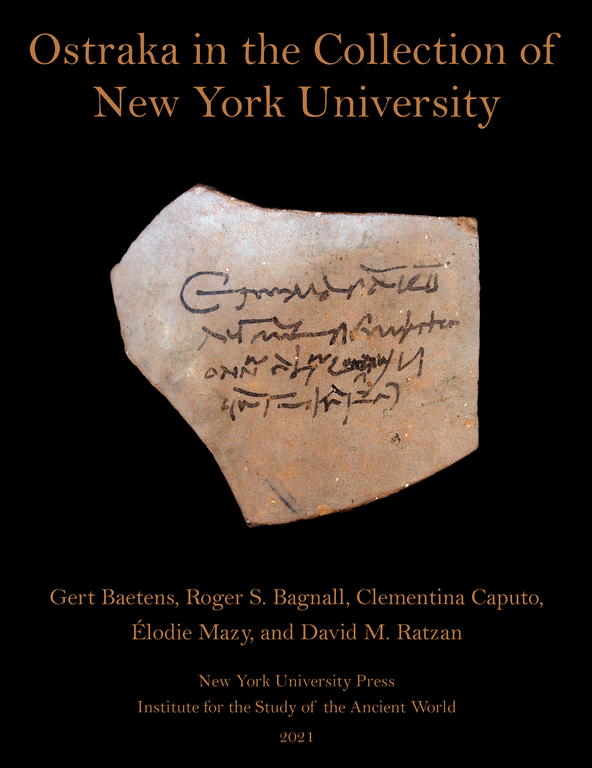Ostraka in the Collection of New York University

Front cover of Ostraka in the Collection of New York University
- by: Gert Baetens, Roger S. Bagnall, Clementina Caputo, Élodie Mazy, David M. Ratzan.
- January 2022
- ISAW/NYU Press
- ISBN: 9781479813797 (hardcover); 9781479813810 (ebook)
Ostraka in the Collection of New York University is a comprehensive edition and commentary of seventy-seven ostraka, or potsherds with ancient texts written on them, from Greco-Roman and late antique Egypt.
Seventy-two of these ostraka are housed in NYU Special Collections, originally purchased by Casper Kraemer in 1932, then the chair of the NYU Classics Department. Although Kraemer advertised the imminent publication of the texts in 1934 and later shared some of the results of his work with the famed papyrologist Herbert Youtie, neither completed the project. The ostraka in this small collection span the 2nd century BCE to the 8th century CE and include both Greek and Coptic texts. The majority, however, form a coherent dossier of tax receipts related to mortuary activities in Upper Egypt during the reign of Augustus (O.NYU 7-70, dated from roughly the last quarter of the 1st cent BCE to 12 CE). The five ostraka published in this volume but not held by NYU include one that had been part of Kraemer’s original purchase but was subsequently lost (thankfully preserved in a photograph in Youtie’s archive at the University of Michigan), and four ostraka now held by the Los Angeles County Museum of Art. The latter four texts were purchased separately and published previously, but clearly belong to the same group of texts. They are included in this volume both for the sake of completeness and because the present editors were able to improve the readings in light of the context provided by the dossier as a whole.
In addition to the scholarly edition of these texts, the volume contains a full discussion of their provenance, the taxes involved, the taxpayers and tax-collectors, and a ceramological analysis of the sherds as media for these texts.